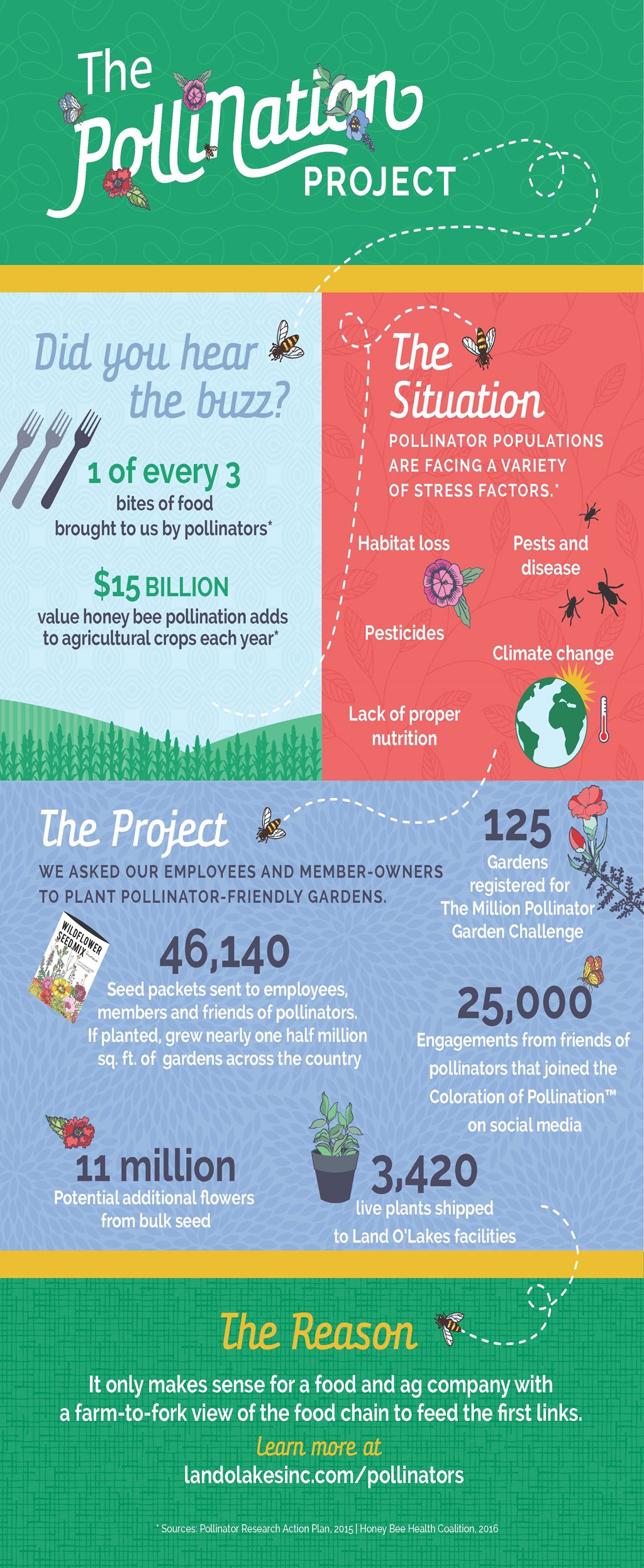We’re scraping the dirt out from under our finger nails, deadheading the last of summer’s vibrant blooms to shake every last wild seed to the ground and patting a back or two for a job well done. Together, we did some good for our small and mighty neighbors—the bees, butterflies and other native pollinators that provide 1 of every 3 bites of food we enjoy.
We’re attempting a recap of season one of the PolliNation™ project—the situation, the project and impact, the reason—in an infographic we’re sharing today. Ultimately, it’s a snapshot of seeds sown and stories shared.
There are some things infographics don’t do well. They don’t convey the smell of the damp earth, the slight and joyful shock when your fingers encounter the earthworm, the sweaty backs and the laughter that accompanies the shared work of friends and colleagues. We haven’t adequately captured Vicki Traub’s smile or persistent insistence on sharing seeds with every single person who entered the Winfield US warehouse and service center in Sioux Falls, South Dakota this growing season. Or, the Melrose, Minnesota dairy plant team’s excitement that their garden finally had some color (Yes! Next year will be better, too.).
We can’t adequately capture the passion of all the people—many people—who came together to plant gardens for a greater good. Bound together by purpose, we fed some human progress with a small little project to help the bees and butterflies, the first links in our food chain.
The honey has been harvested from our headquarters’ hive (80 pounds of it!), and we’ve now entered that time of year in Minnesota when you can just see your breath in the morning chill. As the daylight hours grow shorter, it’s time to put the garden to bed and leave this worthy work of planting pollinator-friendly forage land until next growing season.
We end the summer with gratitude—for all of the people who took the PolliNation
™ project to heart...and for the bees and butterflies who help feed us. Until next year.
